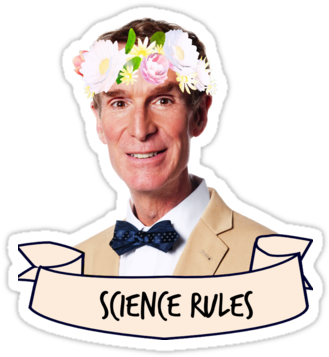"Son, if you're interested in biology, you'll have to learn to understand that the definitions of terms are rather... loose."
Science Memes
Welcome to c/science_memes @ Mander.xyz!
A place for majestic STEMLORD peacocking, as well as memes about the realities of working in a lab.

Rules
- Don't throw mud. Behave like an intellectual and remember the human.
- Keep it rooted (on topic).
- No spam.
- Infographics welcome, get schooled.
This is a science community. We use the Dawkins definition of meme.
Research Committee
Other Mander Communities
Science and Research
Biology and Life Sciences
- !abiogenesis@mander.xyz
- !animal-behavior@mander.xyz
- !anthropology@mander.xyz
- !arachnology@mander.xyz
- !balconygardening@slrpnk.net
- !biodiversity@mander.xyz
- !biology@mander.xyz
- !biophysics@mander.xyz
- !botany@mander.xyz
- !ecology@mander.xyz
- !entomology@mander.xyz
- !fermentation@mander.xyz
- !herpetology@mander.xyz
- !houseplants@mander.xyz
- !medicine@mander.xyz
- !microscopy@mander.xyz
- !mycology@mander.xyz
- !nudibranchs@mander.xyz
- !nutrition@mander.xyz
- !palaeoecology@mander.xyz
- !palaeontology@mander.xyz
- !photosynthesis@mander.xyz
- !plantid@mander.xyz
- !plants@mander.xyz
- !reptiles and amphibians@mander.xyz
Physical Sciences
- !astronomy@mander.xyz
- !chemistry@mander.xyz
- !earthscience@mander.xyz
- !geography@mander.xyz
- !geospatial@mander.xyz
- !nuclear@mander.xyz
- !physics@mander.xyz
- !quantum-computing@mander.xyz
- !spectroscopy@mander.xyz
Humanities and Social Sciences
Practical and Applied Sciences
- !exercise-and sports-science@mander.xyz
- !gardening@mander.xyz
- !self sufficiency@mander.xyz
- !soilscience@slrpnk.net
- !terrariums@mander.xyz
- !timelapse@mander.xyz
Memes
Miscellaneous
So, timey-wimey, but with plants?

Yes, but not just plants
But especially with plants
The correct answer is, "We don't know son. You could become a paleo-biologist and be the one to figure it out!"
The answer to any question like that is: I have no idea, but we'll try and find out tomorrow. And if we can't, that's okay.
The "if we can't, that's okay" is really nice to add. I'll try to keep it in mind. My 4yo tends to become frustrated when we can't keep our words.
Good question my son, define "seed"
Sigh *unzips*
ಠ_ಠ
What? I'm just giving a practical demonstration.
:-\
( ͡° ͜ʖ ͡°)
A seed is an integumented indehiscent megasporangium with one functional megaspore.
It doesn't have an ambiguous definition, and we know, without any uncertainty, that it evolved precisely once.
Can you translate that to English

Somewhat, but keep in mind, its a half decade of study to develop the understanding. Also, trying to create parallels between how plants do sex and how animals do sex, thats going to throw you off. Plants do sex in a fundamentally different way than how animals do sex.
The basic trajectory in the evolution of land plants has between towards additional layers around the gametophytic generation, and additional investment in that generation. Animals, like us, have a unicellular gametic generation (sperm and eggs). Plants, well, its complicated.. Basically, when plants first came onto land, the haploid, gametic generation was the "big obvious plant" thing, but that switched at a certain point. So its just not possible to map plant evolution onto animal evolution.
Early land plants invested very very little into the next generation. It was all spores, single cells, which then had to establish themselves without any support from the parent generation. But the haploid generation was the dominant plant part. These plants are still with us today in the form of mosses and liverworts.
In liverworts and mosses, its still the N generation that is the dominant plant part, and the 2N generation is totally dependent on the N generation. This all got flipped on its head when plants developed vascularization, and the 2N generation became the dominant plant part.
PLANT EVOLUTIONARY TIMELINE FOR SEED COMPONENTS
| MYA | Evolutionary Step | Seed Component | Definition | Dominant Plant Body |
|-------|----------------------------------|------------------------|------------------------------------------------------------------|----------------------|
| ~470 | Earliest land plants | — | Non-vascular; liverwort-like | N (haploid) |
| ~430 | Vascular tissue appears | — | Enables upright growth, fluid transport | 2N (diploid) |
| ~420 | Sporangia | Megasporangium begins | Spore-producing structures (seen in Rhyniophytes, Lycophytes) | 2N |
| ~410 | Heterospory | Functional megaspore | Plants make large (mega) and small (micro) spores | 2N |
| ~385 | Runcaria | Integument precursor | Fossil shows integumented megasporangium, no fertilization yet | 2N |
| ~365 | Seed ferns (Pteridosperms) | Ovule (true seed) | Integumented, indehiscent megasporangium with 1 megaspore | 2N |
| ~360 | Early gymnosperms | Full seed | Retained embryo + full protective tissue | 2N |
| ~320 | Gymnosperm radiation | — | Conifers, cycads diversify | 2N |
| ~140 | Angiosperms (flowering plants) | — | Double fertilization, fruit, enclosed ovules | 2N |
This, and your explanation below is fantastic. I had no idea that this was known and thought it plausible to have evolved many times like crabs.
Also, name checks out
"How to Jordan Petersen your kid"
Also define "evolve" in a way that can be quantized like this.
69, son. 69.
Nice, dad. Nice.
Nice
Hm, I was intrigued and looked at the evolution of plants. This made me realize how paraphyletic gymnosperms and angiosperms really are! We just don't know how angiosperms exactly started out and if they might be monophyletic. And in case of gymnosperms, they are consisting of many very different plant groups that evolved independently.
So gymnosperms were probably the first plants to evolve seeds and they "include conifers, cycads, Ginkgo, and gnetophytes, forming the clade Gymnospermae". That doesn't really give an answer but that's the best we can do?
It was previously widely accepted that the gymnosperms originated in the Late Carboniferous period, replacing the lycopsid rainforests of the tropical region, but more recent phylogenetic evidence indicates that they diverged from the ancestors of angiosperms during the Early Carboniferous.[12][13] The radiation of gymnosperms during the late Carboniferous appears to have resulted from a whole genome duplication event around 319 million years ago.[14] Early characteristics of seed plants are evident in fossil progymnosperms of the late Devonian period around 383 million years ago. It has been suggested that during the mid-Mesozoic era, pollination of some extinct groups of gymnosperms was by extinct species of scorpionflies that had specialized proboscis for feeding on pollination drops. The scorpionflies likely engaged in pollination mutualisms with gymnosperms, long before the similar and independent coevolution of nectar-feeding insects on angiosperms.[15][16] Evidence has also been found that mid-Mesozoic gymnosperms were pollinated by Kalligrammatid lacewings, a now-extinct family with members which (in an example of convergent evolution) resembled the modern butterflies that arose far later.
Wow, so there was already pollination going on before flowering plants even existed??? By scorpionflies who's ancestors I frequently see? And there were butterfly-like insects long before real butterflies existed? Look how butterfly-like they were! This is wild!!
Integumented indehiscent mega sporangium with one functional megaspore?
Once.
But once is all you need.
Isn't evolution a constant process instead of happening in steps?
I think the question is how often it evolved independently like bird and bat wings evolved independently
That makes a lot more sense then. Thank you, happy to learn something new.
I forget where I saw this, but trees are kind of like crabs, in that they've convergently evolved many, many, many different times. Pretty interesting!
Also pterosaur wings.
Add flying fish to that.
Ohh I also misunderstood the question.
The term for what your talking about is "convergent evolution".
I recently figured out that wheat/gluten FUBARs my health, so even just the concept of cereal grains has recently exploded in complexity in my head.
Before, I was eating:
- wheat (incl. durum, spelt, rye, and rarely barley, emmer)
- oats
- rice
Now I newly eat:
- buckwheat
- millet
- quinoa (in like three different colors)
- amaranth
- whole-grain rice is apparently pretty cool
- maize/corn (in the form of polenta and tortilla)
Buckwheat is so good if you fry onions, carrots and bacon, and then mix with boiled buckwheat.
Also if you don't use multi-cooker - consider. It is a bit hard to get used to, but gives additional freedom in cooking everything from your list with meat.
Well, I happen to separately ~~only eat foods that don't cast a shadow~~ do the vegan thing and my genes don't like the taste of onion either, so uhh... 😅
But still good info. I haven't yet tried cooking whole-grain buckwheat myself, so knowing a combination that works, I can figure out substitutes or other combinations which are likely to work.
Oh, then it might be a bit harder, but you just need something greasy to compensate the dry. Onions give some of it already, and maybe even without bacon they will just do the job. Just take two onions instead of one, and fry them for longer.
And this is the foundation, spices are up to you, I go moderately crazy with paprika, koriander, basil, pepper and whatever is required to finalize the taste. It forgives a lot :) Buckwheat I use is the dried brown one. Probably with wholegrain one you even don't need to compensate that dry that much as well.
Good luck!
Leaves evolved more times if you include blades of algae
At least once
The original comic was drawn by Chris Halberk, if I'm not mistaken.
Depends on what you mean by leaf, some plants has phylloclades, which is the widened stem to look like leaves. You can see this in acacia trees, you see those tiny leaflets those are the actual leaves on the stem
Ask your school teacher tomorrow.
Which came first, the plant or the seed?
